HashiCorp Certified: Vault Operations Professional 2022
Create a working Vault server configuration given a scenario
Identity Secrets Engine
Vault’s Identity Secrets Engine is the core component for managing identities and policies in Vault. It tracks all clients (entities), maps authentication methods to those entities via aliases, and enables scalable policy assignment using groups.
Overview
Note
The Identity Secrets Engine is mounted by default in Vault (path: identity/). It cannot be disabled or moved.
Key characteristics:
- Represents every Vault client as an entity, each with:
- A unique entity ID.
- Zero or more aliases linking auth methods.
- Operators can manage entities, aliases, and groups via the UI, CLI, or API.
- On first login, Vault auto-creates an entity and alias if none exist.
| Feature | Description |
|---|---|
| Entities | Unique identities for users or systems |
| Aliases | Links between auth methods and entities |
| Groups | Collections of entities for policy management at scale |
| Default Mount | Always enabled at identity/ |
Entities and Aliases
An entity represents one person or system. An alias maps a particular authentication method to that entity. You can pre-create entities and add aliases later or let Vault handle it automatically.
When a new user logs in via userpass, Vault:
- Creates an entity (e.g.,
b81de864-...). - Attaches an alias combining the auth method (
userpass) and username (JSmith). - Associates policies and optional metadata.
Example CLI commands:
vault write identity/entity name="Julie Smith" metadata=department=finance policies="management"
vault write identity/entity-alias name="JSmith" canonical_id="E48C..." mount_accessor="$(vault auth list -format=json | jq -r '.userpass_accessor')"
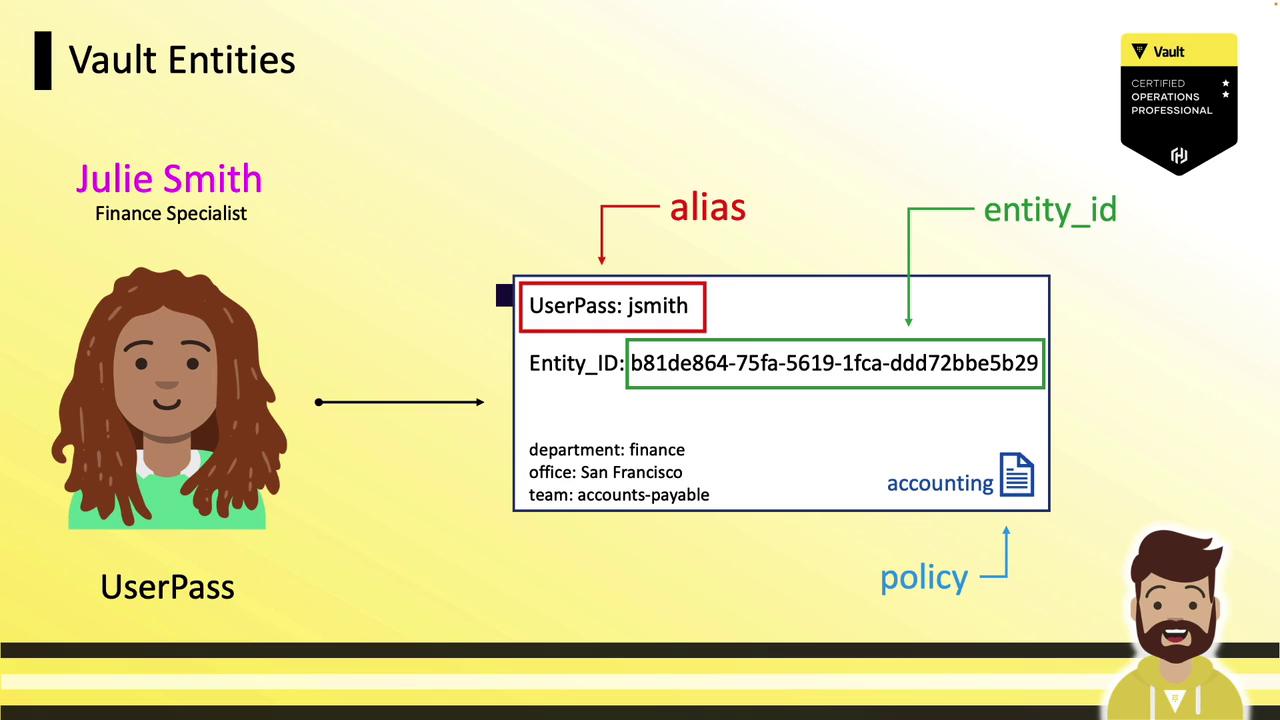
Multiple Authentication Methods
Without consolidation, multiple auth methods create separate entities:
userpass/JSmith→ entityB81D…(policy:accounting)ldap/[email protected]→ entityE93D…(policy:finance)github/jsmith22→ entityF45A…(policy:accounts-payable)
This fragmentation can complicate policy management and reporting.

Consolidating into a Single Entity
To unify access, create one Julie Smith entity and attach all auth method aliases:
- Create the entity and assign shared policy (
management):vault write identity/entity name="Julie Smith" policies="management" - Add aliases for each auth method:
vault write identity/entity-alias name="JSmith" canonical_id="E48C..." mount_accessor="userpass_accessor" vault write identity/entity-alias name="[email protected]" canonical_id="E48C..." mount_accessor="ldap_accessor" vault write identity/entity-alias name="jsmith22" canonical_id="E48C..." mount_accessor="github_accessor" - On login via any method, tokens inherit:
- Alias-level policy (e.g.,
accounting) - Entity-level policy (
management)
- Alias-level policy (e.g.,
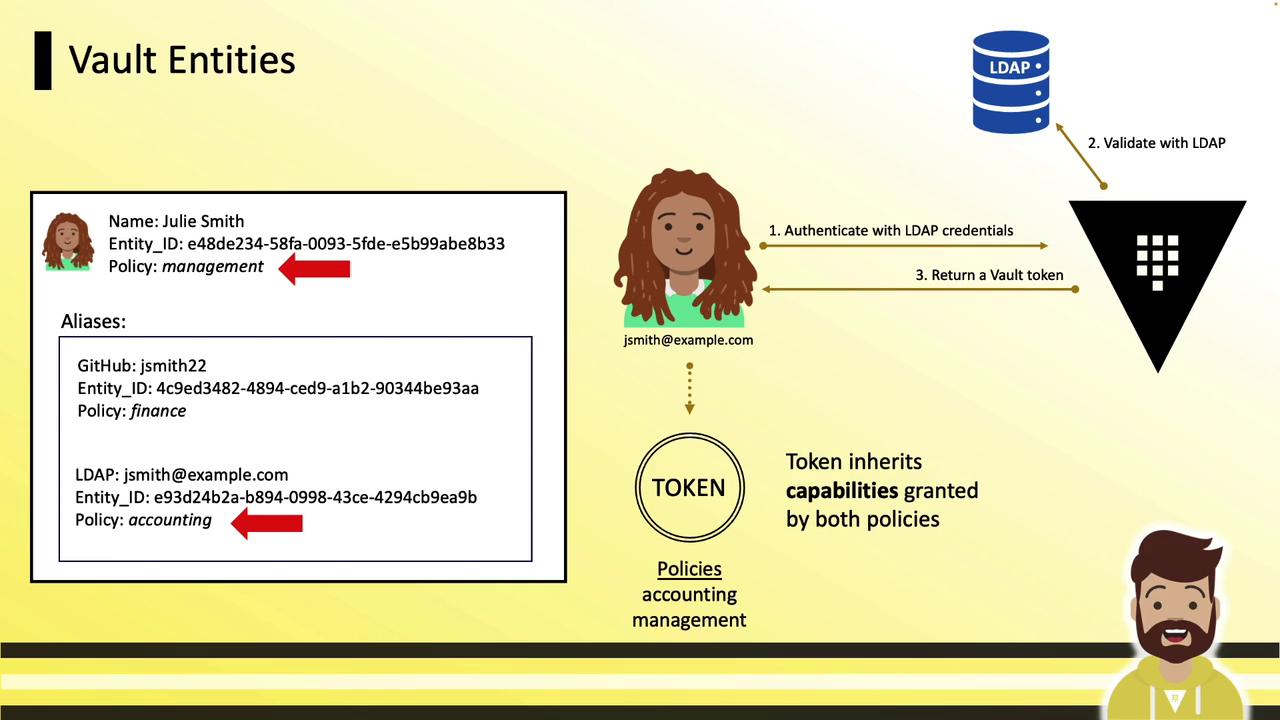
Vault Groups
Groups enable policy management for many entities simultaneously:
- A group can contain entities and subgroups.
- Assign policies at the group level; all members inherit them.
- Similar to directory-based groups (LDAP/AD).
Example: A Finance Team group with the finance policy includes:
- Maria (entity-level
accounts-payable) - John (entity-level
management)
On login, tokens merge policies from:
- Alias
- Entity
- Group
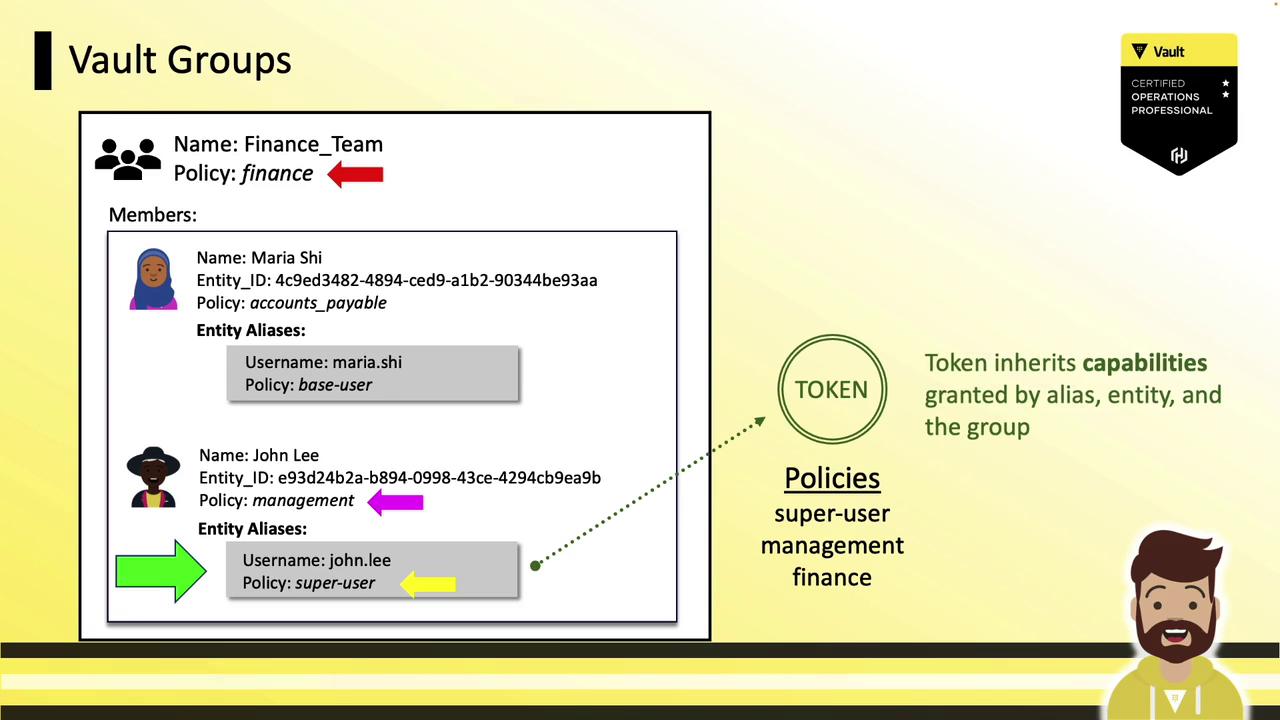
Internal vs. External Groups
Vault supports two group types:
| Group Type | Creation | Membership Source | Use Case |
|---|---|---|---|
| Internal Group | Manually in Vault | Vault managed | Propagate permissions across namespaces |
| External Group | Auto-mapped from IdP | LDAP, OIDC, Okta, etc. | Mirror external identity provider groups and policies |
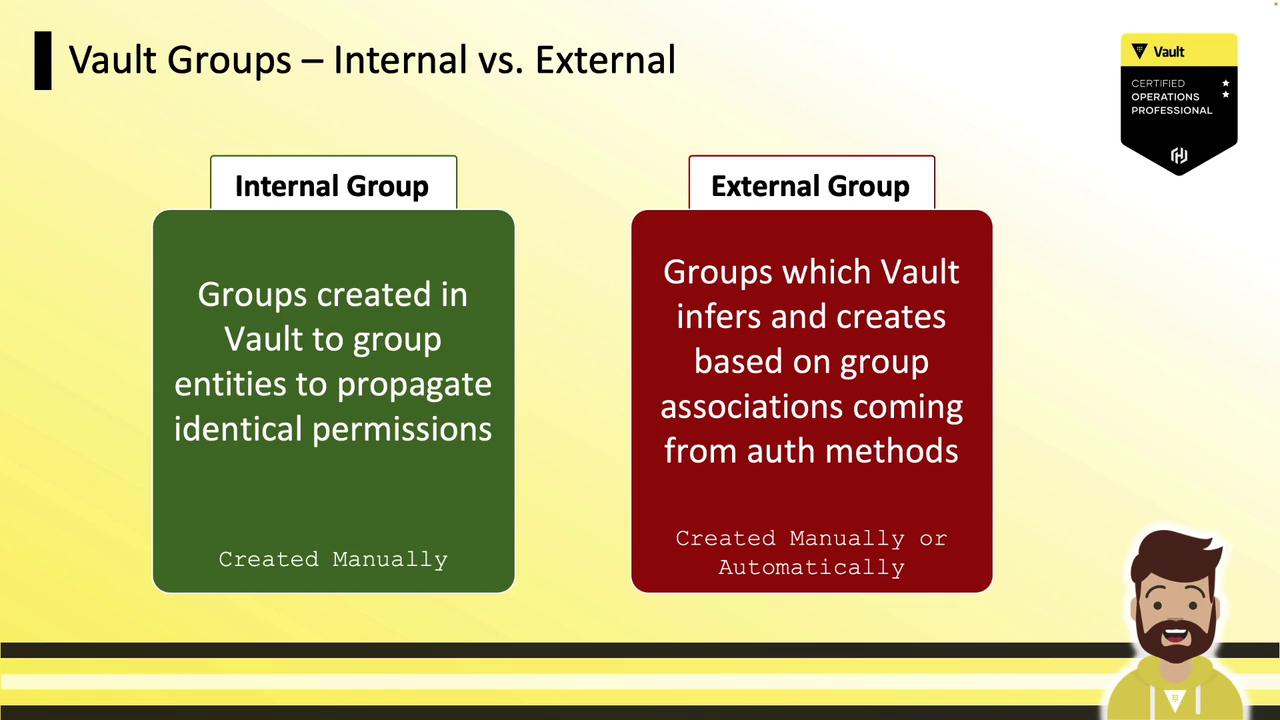
Internal Groups and Namespaces
Use internal groups at the root namespace to grant child namespaces access without reconfiguring auth everywhere:
- At root: create an internal group
team-financewith policyfinance. - In child namespace (
finance): reference the root group as a subgroup. - Users authenticated at root automatically gain child namespace permissions.
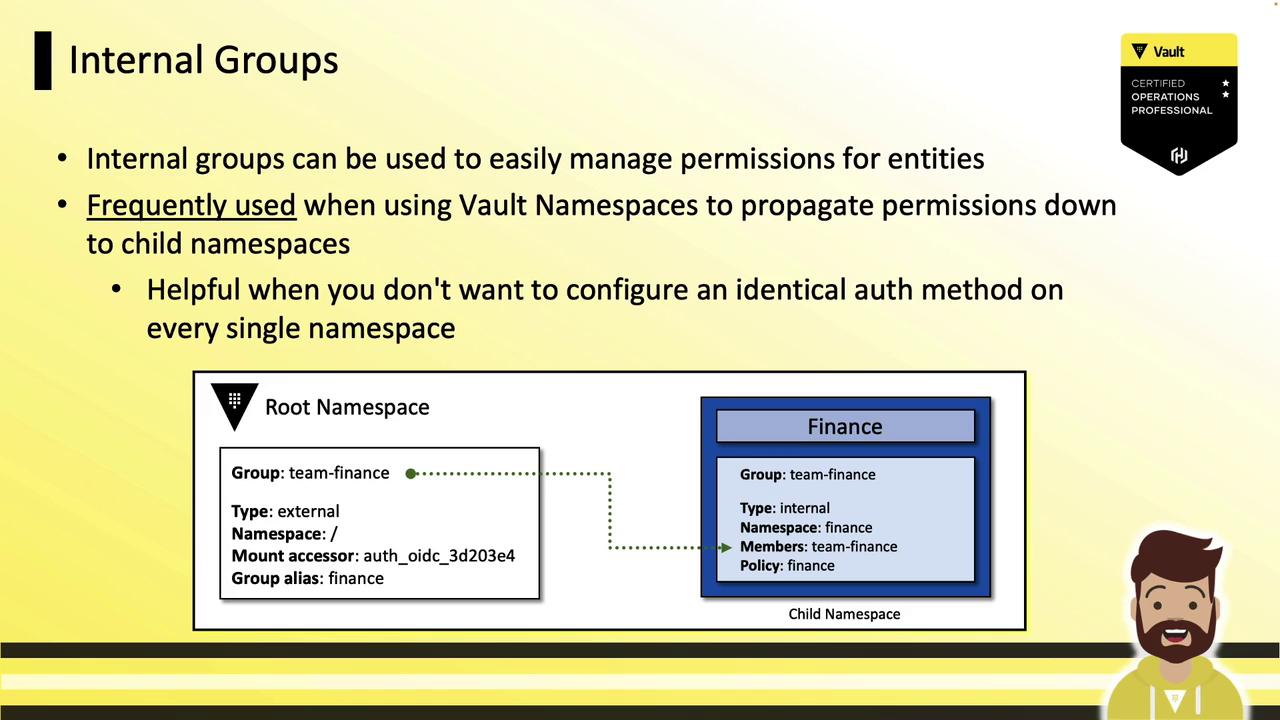
External Groups
External groups sync with your identity provider’s groups:
- Create a Vault external group (e.g.,
team-finance). - Map an alias to the provider’s group name or UUID.
- Assign policies in Vault; manage membership in your IdP.
On login, Vault reflects current IdP memberships and applies policies.
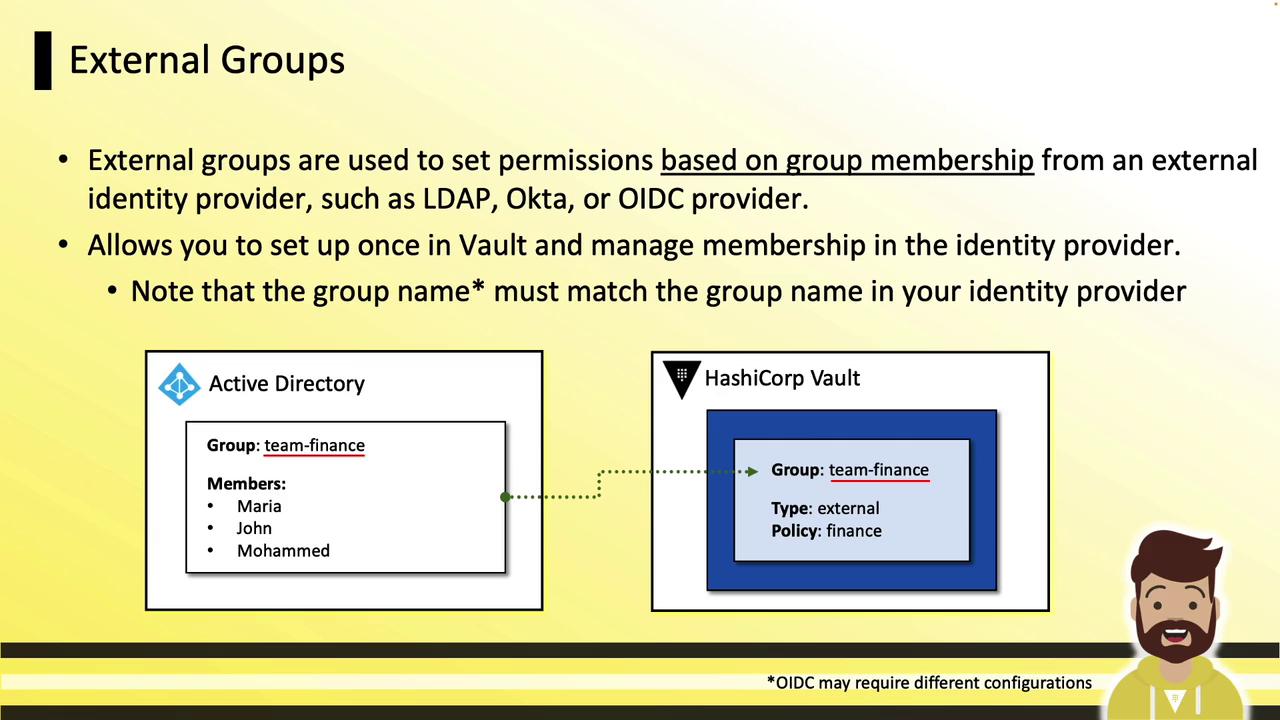
Summary
- Entities unify clients under a unique identifier.
- Aliases link auth methods to entities for granular policies.
- Groups (internal/external) scale policy management across teams and namespaces.
- Use the Vault CLI and UI to configure entities, aliases, and groups.
Links and References
Watch Video
Watch video content